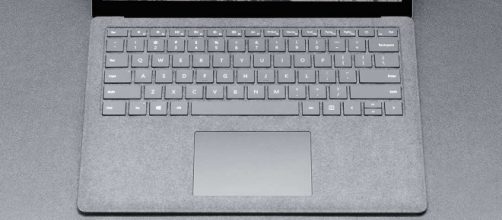Microsoft recently dropped a bomb in the highly competitive ultraportable Laptop market with the unveiling of their new "true laptop" offering, the Microsoft Surface Laptop. Unlike its surface-branded siblings, the new device doesn't have a detachable screen, no back stands, and no other gimmicks. The laptop's design is undoubtedly sleek and may very well be as good looking as any other slim laptop available in the market. However, lying beneath its stylish exterior and high-end spec sheet, there may be a few elements that prevent it from being the ultimate slim laptop for 2017.
A very restrictive operating system
Microsoft explicitly mentioned that the new laptop is intended for the education market. This is made more apparent in the stripped-down version of Windows 10 that comes installed with every unit. The new version, called Windows 10 S, does boot faster and is quite smoother than the full version, but it does have a lot of limitations such as not being able to run executable files and programs not found in the Microsoft App Store.
Additionally, users no longer have the option to change the default browsers and search option within the new version. This means that users are stuck using Microsoft's own browser and search engine, namely Microsoft Edge and Bing, respectively.
Users do have the option to upgrade the pre-installed Windows 10 S to the higher-end Windows 10 Pro, but that would require users to fork out an additional $49.
Price does not match its intended market
Despite being a laptop built for the education market, the device actually carries a not-so-budget-friendly price. The base model, which has a seventh generation Kaby Lake Core i5 processor, 4 GB of RAM, and 128 GB of Solid State Storage, starts at $999. The highest-end model, with a Core i7 processor, 16 GB of RAM, and 512 GB of solid state storage, costs a whopping $2,199. It goes without saying that not a lot of students can probably afford that price.
A questionable choice of materials
To make the laptop feel more premium, Microsoft has incorporated a fancy new Italian Alcantara fabric onto the surface of the device.
The fabric, which is a mixture of polyester and Polyurethane, is quite durable and does not wear or tear that easily. It is also quite soft to the touch and eliminates the need for contact with cold metal surfaces during use.
However, the biggest problem with the fabric is that it is prone to accumulating dirt and grime over time. Unlike removable covers and other accessories, the Alcantara used on the Surface Laptop is non-removable. Several users have expressed their concerns on the design choice and have explained that Alcantara is actually quite tricky to clean. Grime and dirt are not easily removed, which means that users will have to be extra careful with the laptop lest they want to go through a complicated procedure of cleaning it up using different chemicals.


